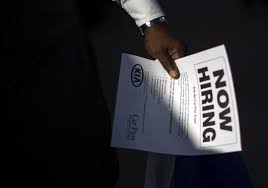How to Reduce Leadership Failures and Cost of Dismissals
How to Reduce Leadership Failures and Cost of Dismissals

“The challenge of leadership is to be strong, but not rude; be kind, but not weak; be bold, but not bully; be thoughtful, but not lazy; be humble, but not timid; be proud, but not arrogant; have humor, but without folly,” says Jim Rohn. It precisely defines a leader and his traits or qualities. Those who fail to understand it fall short of leadership in their organizations. A leader is not a cog in the machine or mechanism of an organization but a driver of the organization. A leader who drives an organization towards its goals under the influence of his positive traits, not just by means of his authority, is a real performer. Otherwise, it leads to a leadership failure. Well, studies say that about 50% of leaders face leadership failures.
How to reduce leadership failure is a vital question in the current scenario. Leadership failure at upper levels of an organization’s totem pole not only overwhelms the organization with a financial burden considering the costs of recruiting leaders, but also affects the organization’s public image. Even the morale of employees at junior levels may be disturbed. Junior employees’ lack of motivation to stay with the organization is one of the possible consequences of leadership failure.
The 2015 report by the Conference Board states that about 30% of CEO successions has taken place due to dismissals since 2008. Dismissal of high-profile leaders costs the US economy approximately $14 billion every year, according to Nat Stoddard and Claire Wyckoff, authors of The Right Leader: Selecting Executives Who Fit. They estimate that the cost of replacement of a global conglomerate’s CEO may go as high as $52 million.
In some cases, leadership failure is a grim outcome of the selection process at organizations. The management often handpicks leaders from among high-performing employees. They take employees’ current performance into consideration for a leadership position without evaluating their potential for other facets of a leadership role, to say, strategic thinking, team management, risk handling, etc. An employee may perform beyond measure as an individual contributor or a team member. What about his or her ability to perform other roles that a leadership position comprises? Performance is one of the parameters of an employee’s evaluation in the current role. It does not give an overall picture of his or her leadership eligibility. To be precise, a solid performer may not prove to be a good leader.
A leader never works alone. A leader’s ability to build good relationships and socialize with peers, team members and stakeholders must be evaluated. A potential leader’s social skills and empathy are required to be judged. The management or the hiring manager should check a potential leader’s ability to understand the nitty gritty of business, which is a critical requirement for decision-making. The ability to motivate team members is a business-critical leadership trait required for timely, successful completion of projects.
Lack of self awareness is another reason of leadership failure. It may cause miscommunication with team members, thereby creating ambiguous situations which may, in turn, lead to project failure. Leaders who lack self awareness often fail to notice talent in others. One’s self awareness is key to one’s interpersonal, intrapersonal and team management skills. One’s self awareness prevents one’s overconfidence.
Improvement of the leader selection and development process can reduce occurrence of leadership failure at organizations. A tried and tested selection system that we at CYRIS Executive Search believe in examines the skills and competencies of potential candidates for leadership roles. We do have a proven track record of success in talent acquisition for leadership positions at prestigious organizations.




